‘End of life’ is one of the key specifications that you should keep in mind as you compare battery storage options for your home. How is battery end of life defined, and why is it so important?
Defining battery end of life
If you have a battery storage system installed on your home, its lifespan can be explained in three different ways. It’s very important for you as a consumer to understand these terms in order to meaningfully compare products – preferably across all three metrics.
- Cycle life – The number of times the battery can be fully charged and discharged (one cycle).
- Warrantied life – Usually described in years (e.g. 10 year life under warranty). You may also see ‘expected operational life’ pop up from time to time – this will usually be a few years longer than the warrantied lifespan, but it’s best to think of this as a bonus, as this extra term of operation is not covered under warranty.
- Total energy throughput – The total amount of energy you can expect to ‘pass through’ the battery during its life (e.g. 30 megawatt-hours).
Most companies will broadcast their product’s warranty in one or more of the three ways mentioned above. The first two are the most commonly used at the moment, and while they are useful, we think that every customer should also have access to clear ‘energy throughput’ figures when they sign up to buy a system. A guaranteed energy throughput figure is the best way to estimate how much this battery can potentially save you over the course of its life.
What happens at the end of a battery’s life?
Reaching end of life (EoL) does not necessarily mean that a battery will no longer function; in fact, it may still be usable, albeit in a diminished capacity. For most (but not all) types of batteries, end of life agreed to be the point at which the a battery will hold only a set percentage of its original storage capacity (‘retained capacity’). This gradual degradation is known as ‘capacity fade‘.
In addition to the reduced ability to hold a charge, reaching end of life may also be associated with other markers of decreased performance: a poorer ratio of ‘energy in’ to ‘energy out’ (round-trip efficiency) and in some batteries an increased risk of other malfunction that could render them unusable or unreliable.
For example, end of life for a lead-acid battery is usually 80% – so once a lead-acid battery bank with an original capacity of 10 kilowatt-hours (kWh) of energy reaches the end of its life, it will only be able to store 8kWh. If you life off-grid, this means you’ve got less energy at your disposal than you would have at the beginning of the battery’s life; if the batteries are in a grid-connected system, this means that you’ll end up drawing more energy from the grid as you’ll have less battery capacity to fall back on.
Some examples
Different battery products have different EoL terms in their warranty. A few examples are below:
- Tesla defines its iconic Powerwall‘s end of life at 60% of original capacity of 6.4kWh – so about 3.78kWh or usable energy. The product’s warranty covers its operation for 10 years of ‘daily cycling’ (i.e. 1x cycle per day), or about 3,600 cycles.
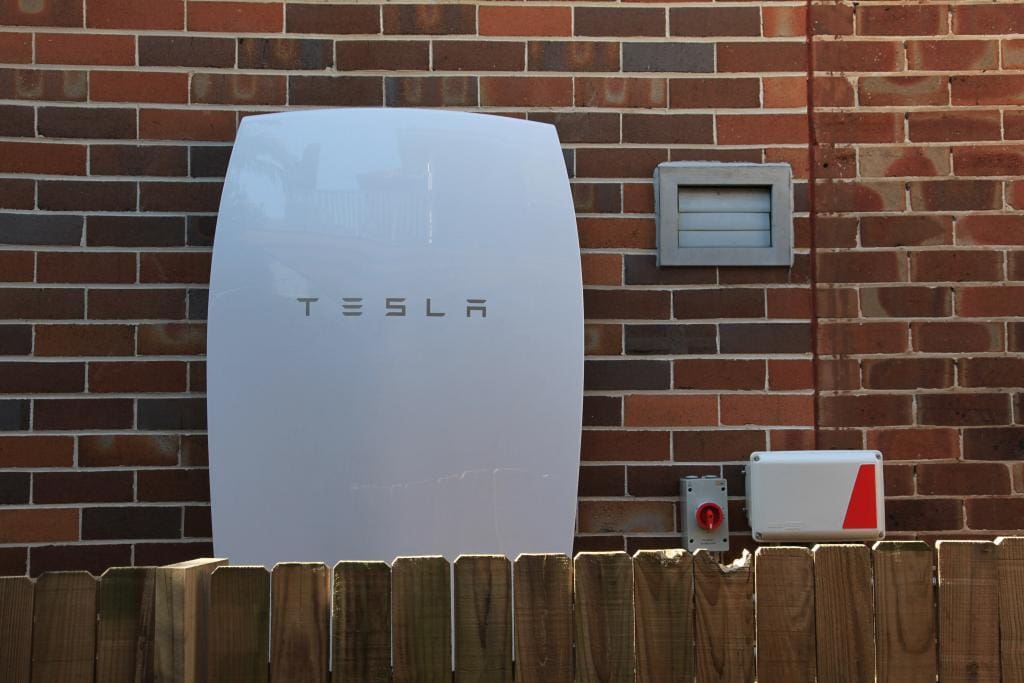
- Enphase’s modular AC Batteries have an end of life of at least 80% of the original 1.2kWh capacity – so about 0.96kWh. Their warranty also covers 10 years of operation, but for 2x cycles per day (7,300 cycles).
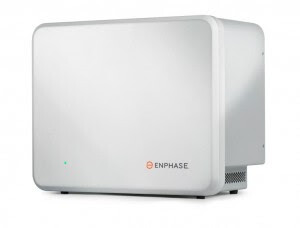
- Redflow’s ZCell is a flow battery whose ability to hold a charge is not diminished over time – meaning that it will hold 10kWh of energy throughout its operational life. The warranty for RedFlow’s ZCell covers 10 years of operation or 36.5 megawatt-hours (MWh, or 36,500kWh) of energy throughput – whichever comes first. This translates into roughly 1 cycle per day over 10 years.
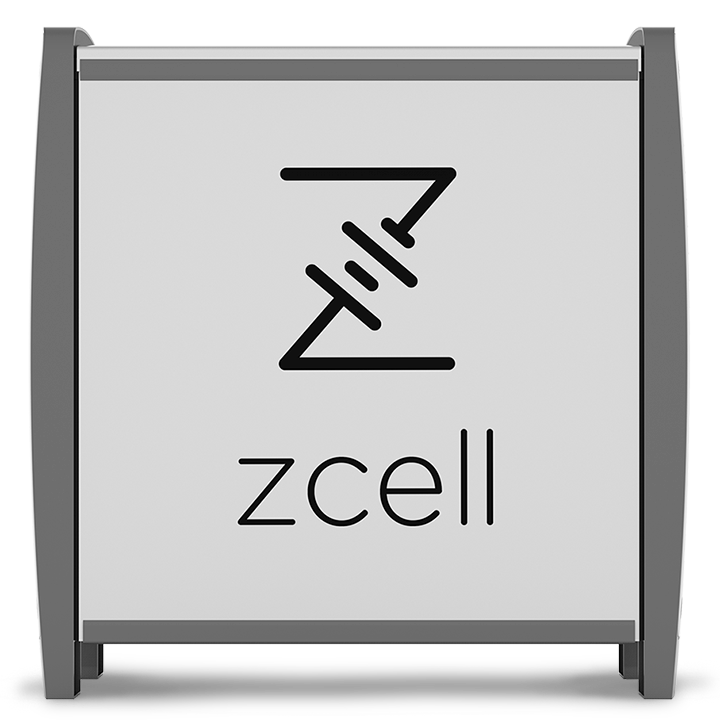
- Aquion’s AHI ‘saltwater’ battery has an end of life of 70% original 2kWh capacity – meaning they will be able to store roughly 1.4kWh at the end of their warranty period. The Aquion warranty fully covers their batteries for the first 5 years of operation, while a pro rata ‘discount’ on purchase of new batteries is given in the event of a warranty claim for the final 3 years. A user can expect at least 3,000 cycles out of an Aquion battery – translating into roughly 1.6 cycles per day over 5 years or just over 1 cycle per day over 8 years.
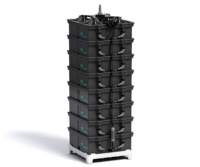
Factors that can influence battery end of life
Most of the battery chemistries used in residential applications are sensitive, requiring proper maintenance/management, considerate treatment and specific environmental conditions in order to maximise their operational life. A number of factors can influence the length of a battery’s service life, including:
- The battery chemistry itself – Each battery chemistry type has its own characteristics, behaviour and tolerances.
- How deeply the battery is discharged in routine use (‘Depth of Discharge‘) – Some batteries are recommended to be discharged to 100% as part of routine operation, but for the most popular types (namely, lead acid and lithium-ion) deeper discharging will lead to fewer cycles and overall shorter battery life.
- How frequently it is required to ‘ramp up’ to meet sudden surges in demand – Battery banks have two types of power ratings – ‘continuous’ and ‘peak’, usually given in kilowatts (kW) as opposed to kilowatt-hours (which denotes stored energy). The former is the rate recommended for regular use, while the latter is the highest advised (or possible) output power of a battery bank. Spikes in power output can have a detrimental effect on battery health and shorten life – especially for lithium and lead batteries.
- The ambient operating temperature – Heat compromises the performance virtually all electronics, and can be particularly harmful to battery electrolyte operation. All steps should be taken to ensure that a battery bank is installed in the coolest place possible and that maximum temperatures do not exceed those in the battery’s specifications.
- Adherence to maintenance regime – Not all batteries require maintenance, but those which do should be services regularly and properly to extend life for as long as possible.
What happens to batteries at end of life?
As mentioned above, some batteries may remain operational even after they have reached their nominal end of life. However, manufacturers will usually recommend that they are retired and/or replaced. Once retired, some batteries may be ‘downcycled’ and resold for use in a ‘second life’ – but keep in mind that this is not recommended for batteries whose safety becomes compromised once they have reached their nominal end of life.
Most batteries can be recycled. The Australian Battery Recycling Initiative (ABRI) is a not-for-profit organisation which promotes the safe recycling of batteries. The table below (from ABRI) provides an overview of the current state of affairs with regard to recycling various battery chemistries.
As can be seen, recycling best practice procedures for lithium-ion batteries – whose popularity has surged dramatically in recent years – are currently being researched. Also missing are various flow battery chemistries and Aquion AHI batteris.
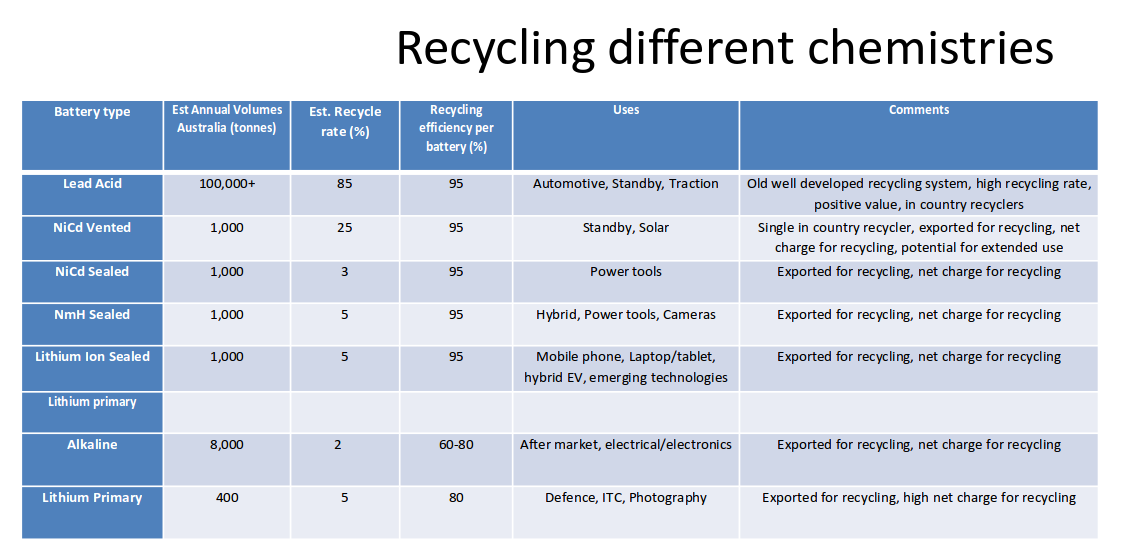 Recycling for different battery chemistries. (Click to enlarge. Image via the Australian Battery Recycling Initiative.)
Recycling for different battery chemistries. (Click to enlarge. Image via the Australian Battery Recycling Initiative.)
© 2016 Solar Choice Pty Ltd
- Solar Power Wagga Wagga, NSW – Compare outputs, returns and installers - 13 March, 2025
- Monocrystalline vs Polycrystalline Solar Panels: Busting Myths - 11 November, 2024
- Solar Hot Water System: Everything You Need to Know - 27 February, 2024